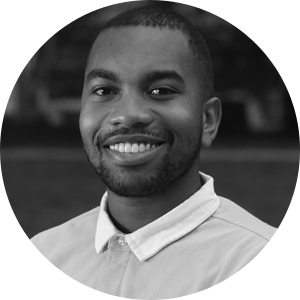Stage (Sub) 0: Indebted wage slavery
We may start out our financial lives with student debt, credit-card debt or mortgage debt in the early years of forging careers and raising families. Whatever its nature, debt keeps you chained to employment or work of some type. As a character in my financial novel, Findependence Day, tells a young millennial couple still in debt: “You can’t climb the tower of wealth while you’re still mired in the basement of debt.”
Since those starting their financial journey in debt haven’t really begun their financial journey at all, I call the preliminary stage Stage 0. Sadly, Indebted Wage Slavery is the all-too-common trap of living paycheque to paycheque or, worse, succumbing to insolvency in doomed attempts to make ends meet through payday loans or other desperate tactics. Ultimately you want to be on the receiving end of interest payments – as an investor – not the dishing-it-out end!
This is probably the most stressful of all the stages to be in. But I have a few key lifestyle tips and steps you can take to move up and out to the next phase:
- Your first task is to live within your means. Otherwise, you’ll fall further and further into the pit of debt.
- Take steps to aggressively pay down your debt by practicing what I call “guerrilla frugality.” You’re in a fight for financial survival and must resist society’s consumerism siren call!
- While working to get out of debt, an interim step is to build an emergency cushion that lets you live at least six months without a paycheque.
Once you have those boxes checked you can breathe easier, start to live a little, and move on to new horizons in your financial life.
Stage 1: Financial security
The next level to aspire to in the ascending hierarchy is Financial Security. In this stage you have eliminated your debts and have accumulated enough wealth so that your absolutely necessary monthly expenses (rent/mortgage, food, utilities, travel and basic entertainment) are taken care of for the near future.
Typically, younger folks rely on jobs to provide the appearance of financial security—but if they spend everything they earn they’re not really free. And as millions are discovering in the globalized economy, the very term “job security” has become an oxymoron. In the old days, a corporate pension made end-of-career financial security possible, but with the decline of Defined Benefit pensions, you need to build a money machine that will pay you while you’re sleeping. That’s where saving and investing come in. Here are three saving/investing tasks and goals you can take to move past Stage 1:
- Commit to a Pay Yourself First strategy of saving and investing by deciding on a set percentage of every paycheque that will go straight to your savings account.
- To start building your Money Machine, you need to automate your savings by setting up a Pre-Authorized Chequing (PAC) arrangement with your financial institution.
- Make the leap from saving in low-return vehicles like daily interest savings accounts, GICs or money market funds and into equity-based instruments, whether individual stocks, low-fee no-load equity mutual funds or exchange-traded funds (ETFs).
Stage 2: Financial vitality
It takes a long time to establish even basic Financial Security; it may not occur until your early 60s when the Government of Canada’s retirement programs kick in (the Canada Pension Plan as early as age 60, Old Age Security as early as age 65). Those old enough to receive OAS have, as the term implies, some assurance their basic monthly expenses can be met. Of course, if all they have is CPP and OAS, they will have to continue to live very frugal lives indeed.
I’d argue you need to aim higher than mere financial survival and embrace what Tony Robbins dubs Financial Vitality. You want enough flexibility in your cash flow that, after the necessities are taken care of, you can enjoy little luxuries like new clothing or intangibles like gym or yoga memberships, and attend the occasional sporting or cultural event. It’s the difference between financially surviving and financially thriving. You may still be on the work treadmill but are striving to escape it by saving and investing (hopefully 10% or more of your income); and you can do so without sacrificing the little services that add zest to life (like proper nutrition and perhaps some cheap home-based entertainment like Netflix). Here are a couple steps for this stage:
- Dream bigger. Once your basic Money Machine is in place, set secondary goals, like buying a vacation property or investment real estate.
- Work with your financial adviser to put a price tag on these dreams and allocate some of your savings program to them, ideally above and beyond your basic saving program. So, for example, if you were saving 10% of your net pay for your basic Freedom/Retirement fund, dig deeper and allocate another 5% to one of your dream goals. This may require cutting back on more frivolous expenditures.
- Plan for the future. Once you’re financially secure and you have a good chunk of money invested or saved up for a down payment on a home, it’s time to protect those assets in the event that something were to happen to you.If you don’t already have a will, Willful will help you create a customized legal will from start to finish. The process takes about 20 minutes, doesn’t require an expensive lawyer or notary, and will cost you as little as $99. Discover more about Willful and sign up today.
Stage 3: Financial independence (aka “findependence”)
Now we arrive at Financial Independence, or Findependence, in which you can cover almost all the daily living expenses that occur without ever having to go back to work again. Not only are you free of any debts and the obligation to service them, but in place of employment income you instead have a “money machine” that spits out interest, dividends and capital gains. You’ve arrived at a point where you can live indefinitely from passive investment income without having to work again—not just for a few years but for as long as you live.
This perpetual stream of income is generated by a nest egg that may take decades of saving and investing to accumulate during Stages 1 & 2. The day you believe you can live for life off your multiple streams of investments, pensions and annuities is what I call Findependence Day. Henceforth you may still work, but you will do so because you choose to, not because you must.
There are three key goals in this stage:
-
No debts allowed. Not even a mortgage. I firmly believe the foundation of financial independence is a paid-for home. Whether at retirement age or not, being rent-free or mortgage free means you don’t have to worry about the single biggest piece of your monthly expenses.
-
You can and probably should work in some capacity, but only if it’s compatible with your ultimate life goals. Some may call this kind of Findependence “Retirement,” but odds are you will continue to work not just for the money but for the mental and social stimulation.
-
Advancing to this new financial stage might be accompanied by advancing to new professional stages: you may no longer be a salaried employee, but instead opt to use your hard-fought Findependence to start your own business, travel and work part-time, or go back to school and retrain for a brand-new career that may sustain you even into your 70s. This is dream time: the days of making compromises just to make a buck are over, or at least they should be.
Stage 4: Victory lap
Some might call this stage true Financial Freedom, which means you no longer have to work and that virtually anything you want is covered financially. But I prefer the more precise term of Victory Lap, which starts on your Findependence Day and can be considered a transition period between employment and the traditional full-stop Retirement that in times past often occurred at age 65. You could call it semi-retirement or self-employment but in our book, Mike Drak and I use the term Victory Lap Retirement.
You’re free to work or not, and at a certain point it doesn’t matter how many zeros are in your investment accounts. Once in the Victory Lap, you are able to live out your big dreams with no financial constraints. Neither you nor your family lack for anything. Still, there continue to be action items:
- Plan for extended Longevity. The good news is you expect to live a long time; the bad news is that means you’ll need more money, especially for health care in the last few years of your long life. Ask your advisor to use an online life expectancy calculator to estimate how long your Victory Lap may last. Consider partial annuitization as a hedge against ultra-longevity.
- Hedge against inflation: Keep investing for growth, maintaining a reasonable portion of your asset allocation in quality stocks that grow their dividends, spread over all the major economic sectors.
- Estate planning and philanthropy. At this stage, wealth begets still more wealth. Make sure your estate planning is in place so your loved ones—rather than the government—can inherit some of your hard-earned wealth. You may move your focus from your immediate circle to the larger community through charitable works and philanthropy, helping others either financially or with your time and energy.
Overwhelmed? Don’t be. As with all things in life, you have to start somewhere. Identify which stage you’re in and which steps you need to take to gradually get to the next one. Pretty soon you’ll be well on your way to true financial freedom, however you define it.






